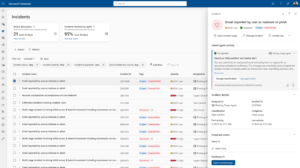Phishing Attack Mimics Booking.com, Distributes Credential-Stealing Malware

Phishing Attack Targets Hospitality Industry: Insights on Microsoft’s Threat Intelligence
Overview of the Campaign
In December 2024, a phishing campaign was identified by Microsoft Threat Intelligence, targeting the hospitality sector, especially personnel associated with Booking.com. This nefarious campaign, ongoing through early 2025, employs a technique called ClickFix, which is designed to steal credentials and commit financial fraud. It primarily focuses on organizations located in North America, Oceania, and various parts of Europe and Asia.
How the ClickFix Technique Works
Exploiting User Behavior
The ClickFix technique capitalizes on human instinct to resolve problems. Scammers send fake emails that showcase misleading error messages. These messages prompt recipients to take specific actions, such as copying and running commands that ultimately lead to a malware download. This technique relies on the interaction of the user, allowing it to bypass conventional security measures.
Characteristics of the Phishing Campaign
The phishing emails sent out in this campaign often mimic communications from Booking.com. These deceptive messages can discuss various topics including:
- Negative guest reviews
- Requests from potential guests
- Promotions or account verifications
Illusions of Legitimacy
Once users click on the malicious link or open a PDF attachment, they are redirected to a phony webpage that looks like Booking.com. This site often incorporates a fake CAPTCHA, tricking the recipient into believing they need to complete additional verification. This step typically involves using a keyboard shortcut to launch a command, which downloads malicious software.
Types of Malware Delivered
The phishing attempts within this campaign have delivered several types of malware, notably:
- XWorm
- Lumma Stealer
- AsyncRAT
- Danabot
- VenomRAT
These malware variants are designed to capture sensitive financial data and user credentials, enabling further fraudulent activity.
Recognition and Reporting of the Threat
Microsoft refers to this phishing activity as Storm-1865, which identifies a persistent cluster of phishing campaigns leading to payment data theft. The organization has noticed an uptick in such activities since early 2023, highlighting the need for vigilance and education on recognizing phishing attempts.
Tips for Recognizing Phishing Attempts
To combat these elaborate scams, users and organizations can take several precautions:
Verify Sender’s Address: Always check the email address of the sender. Legitimate companies do not request sensitive information via unsolicited emails.
Direct Contact: If a message seems suspicious, directly reach out to the company using contact information from their official website.
Urgency Awareness: Be cautious of emails that create a sense of urgency, as this is a common tactic used by scammers.
Link Inspection: Hover over links to see the full URL before clicking. It’s safer to navigate directly to a company’s website via a web browser.
- Watch for Typos: Many phishing emails contain spelling and grammatical errors. Reputable organizations usually proofread their communications thoroughly.
Effective Mitigation Strategies
Organizations can reduce the impact of such phishing threats by implementing the following measures:
Employ Phishing-Resistant Authentication: Use multi-factor authentication (MFA) across all accounts.
Utilize Security Features: Implement Microsoft Defender for Office 365 to recognize and block malicious links in emails.
Encourage Safe Browsing: Urge users to use web browsers that offer built-in security features, such as Microsoft Edge with SmartScreen.
Enable Network Protection: Activate measures to prevent connections to known malicious domains.
- Automated Security Responses: Implement systems that automatically respond to detected threats to minimize exposure.
Understanding the Threat Landscape
With the rise of phishing attacks like Storm-1865, the need for ongoing cybersecurity awareness is crucial. Organizations must adapt to evolving tactics and encourage a culture of caution among employees to identify and report suspicious activities. By doing so, they can create a robust defense against the increasing threat of phishing scams in the digital landscape.
By remaining informed and proactive, both individuals and organizations can mitigate the risk posed by such malicious campaigns.





